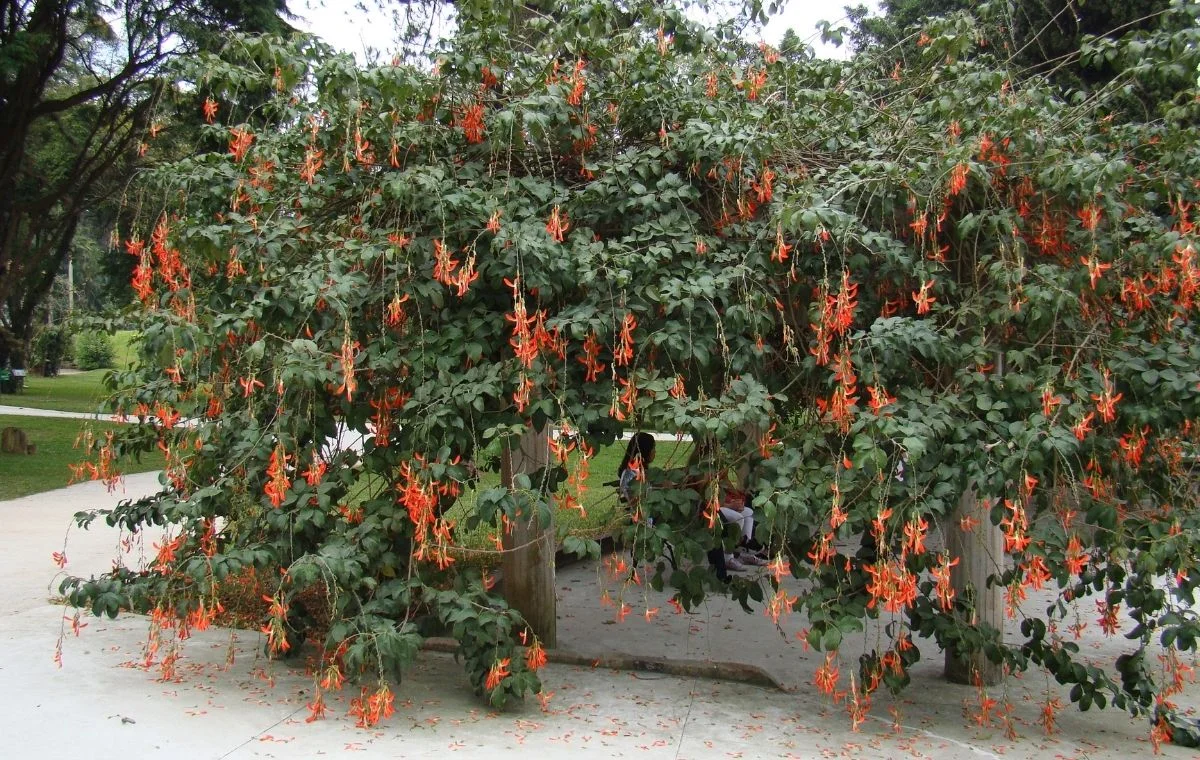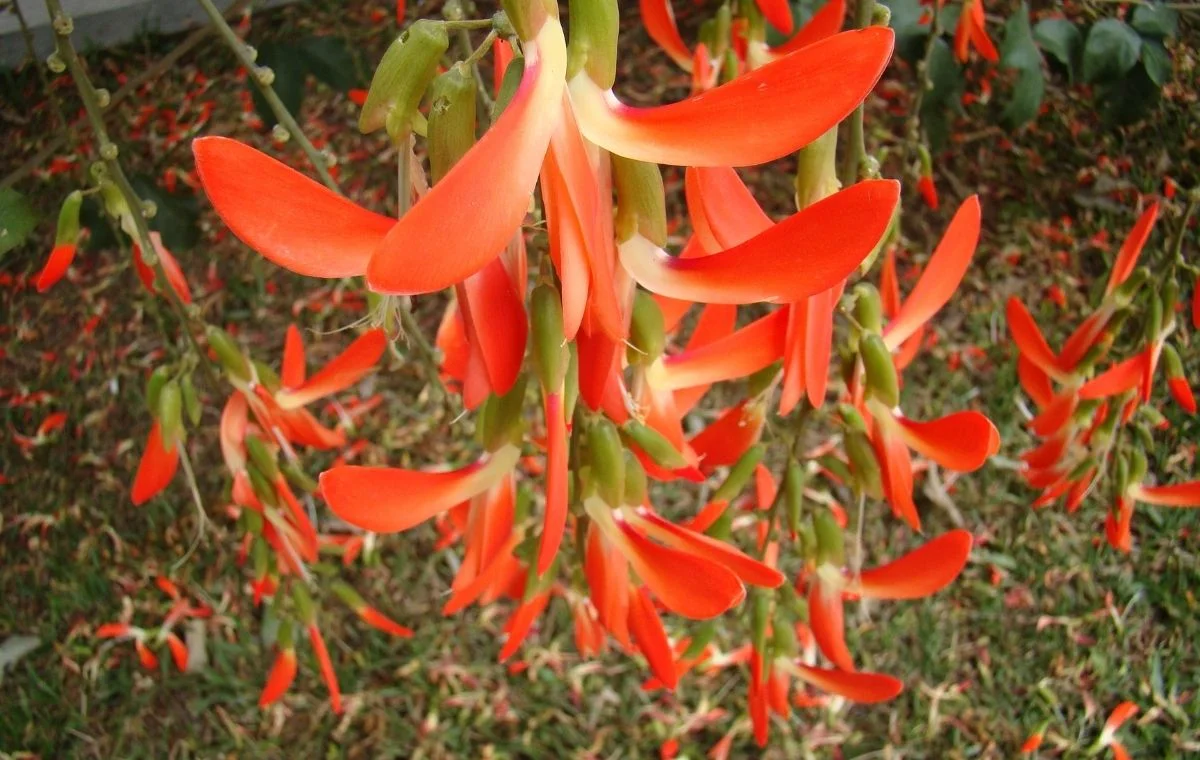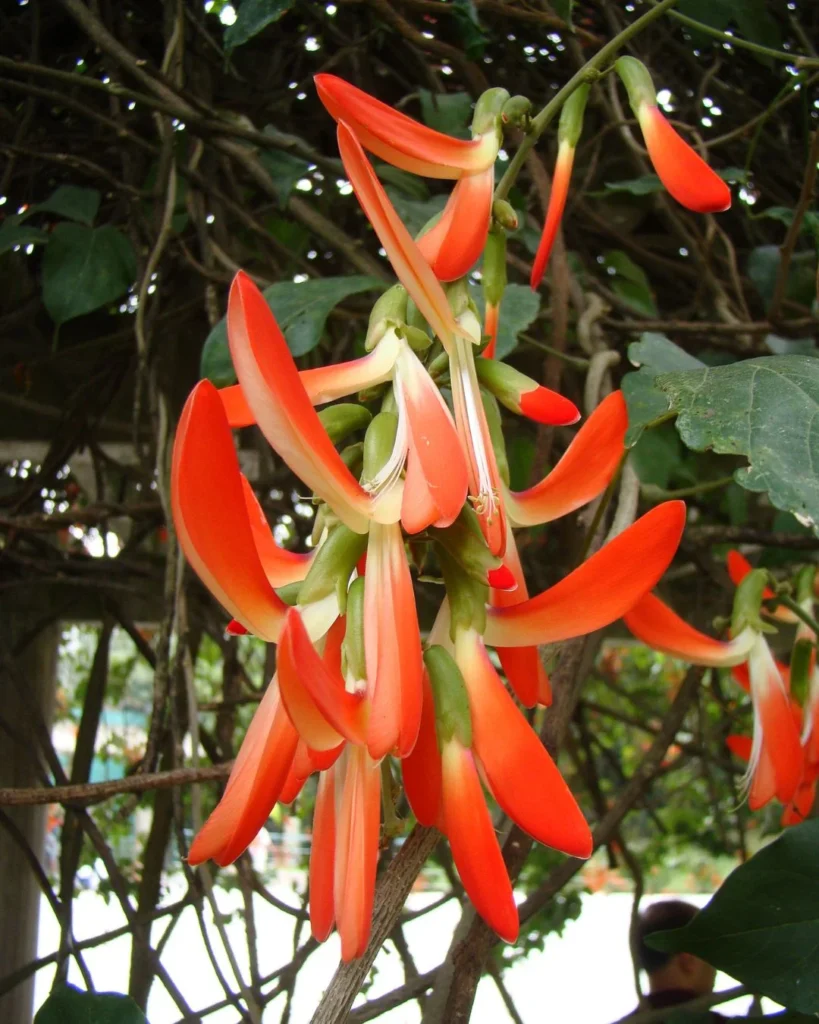The Ddwarf Red Jade vine, recently reclassified from Camptosema grandiflorum to Cratylia spectabilis, is a perennial climber with hanging, red, and highly decorative inflorescences. It is native to a wide region, including eastern Brazil, covering areas from Bahia to São Paulo. This plant primarily grows in seasonal semideciduous forests and gallery forests, which are part of the Caatinga and Cerrado regions, but it is also seen in the Atlantic Forest.
This plant can reach up to 6 meters (about 20 feet) in height, being a twining climber with long, flexible branches equipped with tendrils that allow it to coil and fix itself, climbing on different types of structures. It has vigorous growth and is well-branched, with abundant foliage. Its petioles measure between 3.5 and 5.5 cm (1.4 to 2.2 inches), and the leaves are pinnate-trifoliate, with papery to card-like texture, and leaflets ranging from oval to elliptical in shape. The young leaflets are light green, while the mature ones are dark green. The upper surface of the leaves is generally smooth, while the underside can range from slightly hairy to villous.
It flowers in autumn and winter, producing axillary, long, and hanging inflorescences of the pseudoraceme type, up to 50 cm (about 20 inches) in length. The flowers are papilionaceous, red or red-orange, and the fruit is 13 to 16 cm (about 5 to 6.3 inches) long, with oblong to oval seeds. The flowers of the dwarf red jade vine attract hummingbirds and butterflies, but can also be visited by a variety of pollinating insects. These interactions are crucial for the health of both natural and urban ecosystems, contributing to the preservation of biodiversity. There is also a variety with yellow flowers, rare in cultivation.

This climber, commonly found along Brazilian rural roads, often uses the canopy of trees for support. It can be planted in gardens, provided it is given adequate support for its development, such as pergolas, arbors, fences, or walls. In such structures, its hanging inflorescence is highlighted, as it can be appreciated from below. Additionally, the contrast of green with the red of the flowers adds interest to the garden, as well as the movement caused by the wind.
Thus, in landscaping, the dwarf red jade vine is ideal for creating green curtains, covering pergolas or arches, offering not only visual beauty but also a sense of coziness and privacy in outdoor spaces. Moreover, it attracts many butterflies and hummingbirds. The dwarf red jade vine does not require much maintenance; pruning, for example, is not necessary but can be done after flowering to encourage the development of new inflorescences, as well as to shape the plant and control its growth.
The dwarf red jade vine should be cultivated in full sun or partial shade, in fertile soil, preferably sandy-loam and rich in organic matter. It appreciates moist but not waterlogged soil, so ideally, it should be watered 2 to 3 times a week during the first year of establishment, complementarily until the plant adapts perfectly and roots in the location. Once it reaches adult size, it becomes resistant to short periods of drought.

It is quite frost-resistant and tolerates low winter temperatures, thus suitable for the south of the country and mountainous regions. It is a plant of easy adaptation and can be propagated through seeds, air layering, or cuttings. For seed germination, sowing in the summer, in vermiculite or moist sand, is recommended. When performing vegetative propagations such as air layering and cuttings, better rooting rates will be achieved by using a rooting hormone (IBA).


